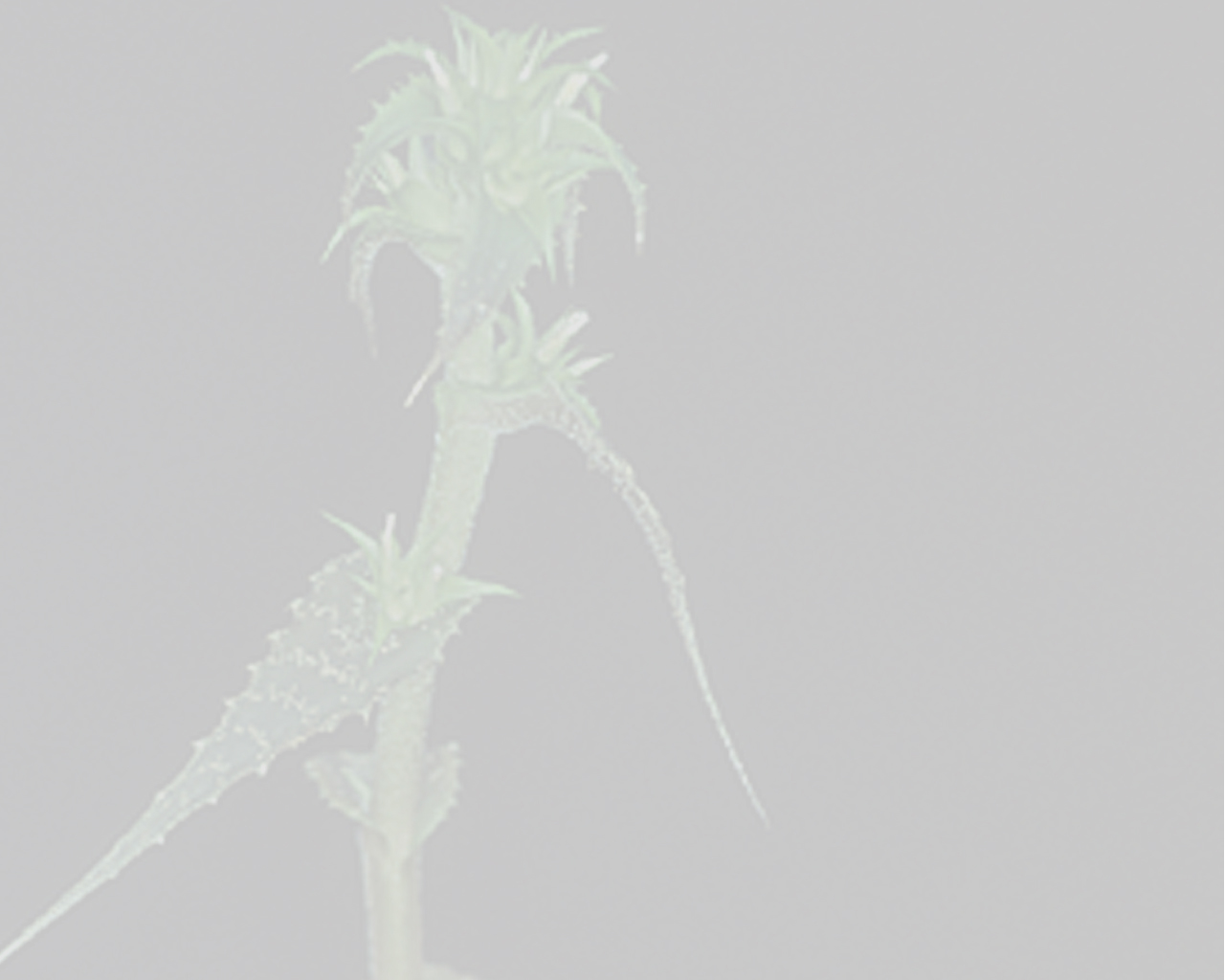

 Orthophytum mucugense Wanderley & Conceição[as Orthophytum mucugense Wanderley & Conceicao]
Orthophytum mucugense Wanderley & Conceição[as Orthophytum mucugense Wanderley & Conceicao]Diagnose: —Orthophytum mucugense proxima O. humile L.B.Sm. et O. navioides (L.B. Sm.) L.B. Sm., sed foliis minoribus, magis coriaceis, laminis lineari-lanceolatis ad triangulari-lanceolata, sparse lepidotis, apicibus acutis et mucronulatis, bracteis primariis, bracteis floralibus et sepalis trichomatibus glandulosis vestitis differt. Observations: —The rosette leaves in O. mucugense are typical for the genusr (ortho = straight; phylum = leaf), in other words, with leaves usually spreading, forming a right angle with the axis of the plant. The leaves are green and, at the anthesis, they become partially or completely red, creating a notable ornamental value for this species, as in most of the representatives of the genus Orthophytum with sessile inflorescence.
Branched inflorescence is a most common occurrence observed in Orthophytum. The flowers are usually congested, with short branches and densely disposed. Each fascicle carries two or three flowers, or more rarely one, being subtended by a primary bract, usually similar to the leaves (Smith & Downs, 1979; Leme, 2004, 2004a).
In the inflorescence of O. mucugense most of the inflorescence is not branched, with a few branches in the outer parts and the absence of branches in the most central portion. Some events were observed that verify the reduction of the branches in this species, in the occurrence, in the outer area of the inflorescence, of fascicles just carrying a flower, in profile, on the opposite side to the floral bract and the presence of a sterile bract sheltering an aborted flower, alongside a functional flower with its respective bract. The flower occurrence of functionally unissexual was also verified, with the presence of flowers with reduction of the gynaecium, more so in the outer flowers, than in the inner portion. In the more central part of the inflorescence apical 'yolks' were observed.
The reduction of the number of flowers and of the branching, and the presence of unisexual flowers observed in Orthophytum mucugense, along with the functional comparison of these structures with the pattern of the inflorescence of other species of the genus, indicate probable reduction of the inflorescence in the species with sessile inflorescences. In that group of species it is possible to observe inflorescences with mich branching and congestion, as in O. burle-marxii, to inflorescences practically without branching, as in O. mucugense. The occurrence of simple inflorescences was noted by Leme (2004) for O. estevesii (Rauh) Leme, a species with an inflorescence scape.
The presence or absence of a scape in Orthophytum, in spite of defining two informal groups of species, should be analyzed with caution, as observed in O. saxicola, where in the same population, individuals are found with very long scapes and others with sessile inflorescence.
Greater emphasis is recommended to the study of the architecture of inflorescences in Bromeliaceae, in general described in an incomplete and superficial way. For this study it is fundamental to analyze live collections or of material fixed for the verification of the morphologic variability, in addition to the study of the herbarium collections. The presence of congested flowers in the genus Orthophytum, especially in the representatives of sessile inflorescences, hinders the interpretation of their morphology. It is necessary also for the appropriate use of the terminology, as bipinnate or tripinnate inflorescences, are erroneous denominations, because the term " pina " refers to vegetative structure and not reproductive, in addition to the pseudo-simple term for inflorescence, we have adopted from Smith & Downs (1979) and that has been used in the descriptions of taxa by different authors.
Orthophytum mucugense, O navioides and O. humile stand out in the group of species with sessile inflorescences, with small rosettes, narrow leaves, reaching ca 4mm wide, and the presence of stolons. Of the three species, O. navioides stands out with the very long stolons and larger leaves, reaching 24cm long, while O. mucugense has triangular-lanceolate to linear-lanceolate blades, reaching to 5cm long. O. humile has linear blades, with about 6cm long densely covered with adpressed scales, in comparison with O. mucugense and O. navioides, whose leaves are glabrescent and sparsely lepidote.
In spite of forming dense populations and occurring in a Conservation park, O. mucugense can be categorized as vulnerable by being known in only one place. Attention needs to be paid to new collection expeditions in different places seeking a better knowledge of its geographical distribution.Edited from (23-08-2014): Sit. Série Cienc. Biol.. (protologue) .